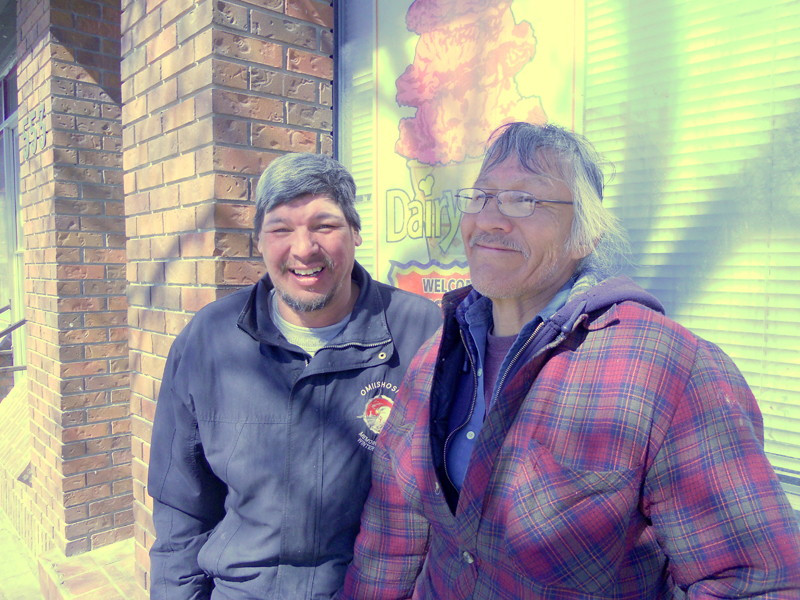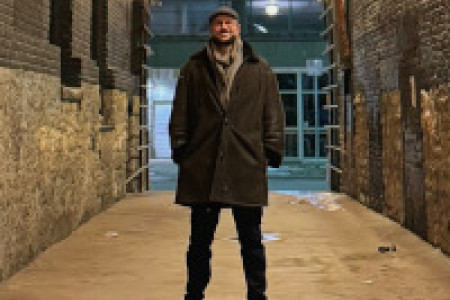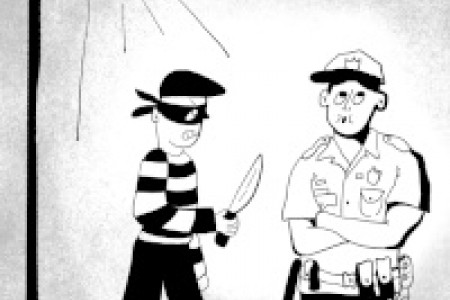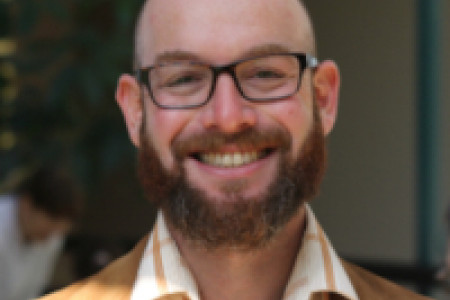Exploring the North End
From Main Street to McPhillips Street, from Dufferin Avenue to Mountain Avenue, Winnipeg’s North End is one of the most culturally, economically and architecturally diverse areas of the city.
Unfortunately, it suffers from a bad image, largely due to the small sections of it that have visible deterioration due to poverty and a lack of upkeep.
If you drive up Main Street, north of Higgins Avenue, you will see some undeniably unattractive aspects of the city – large buildings gone vacant for years; strings of hotels you’ve heard are dangerous and won’t go into; intoxicated people crossing the street at the pace of a belligerent snail.
But that’s just one stretch of the North End and, unfortunately, the most visible one.
In most news reports, you will hear of fighting in the North End, of domestic disputes, of gang violence, of underage prostitution. You may wonder, why do people live there?
For our annual urban issue, The Uniter decided to investigate the North End, highlighting some of the many positive aspects of the community.
The no-vote zone
Basement-level voter turnout in Winnipeg’s North End indicator of poverty, poor political tactics, expert says
Voter turnout in Winnipeg’s North End has ranked among the lowest in elections of all levels of government for years.
Voter Turnout in Manitoba: An Ecological Analysis, a 2011 report from the Manitoba Centre for Policy Research, says that the majority of North End provincial ridings (including Burrows, Point Douglas, the Maples and Minto) only saw between 40-50 per cent voter turnouts in the 2007 provincial election.
In the 2010 civic election, it was a similar story with two of the city’s polling stations with the worst turnouts located in North End wards. Mynarski’s Children of the Earth High School saw 16.44 per cent of voters cast a ballot and Point Douglas’s Freight House Community Centre had a turnout of only 17.08 per cent.
For Jim Silver, the director of urban and inner-city studies for the University of Winnipeg, these consistently low numbers at the polls can be explained by a trio of reasons: sustained poverty, a large aboriginal population who have historically been excluded from the democratic process and politicians failing to use appropriate strategies to engage the community’s residents.
“One of the standard correlations in political science says that the lower the income, the lower the voter turnout in the constituency or riding,” said Silver.
“The poverty that is here in the North End has been here from the post-war period – for the last 50 years and more. Different political parties, different governments have come and gone. Some are a little better than others in what they do for people in the North End, but none of them are actually committed to solving the problems that exist here and people are aware of that.”
Silver sees politicians’ lack of commitment and their cookie-cutter strategies for reaching out to voters as hindering potential gains in a community that is more welcoming to gatherings like feasts than door-knocking to discuss issues.
“I think that if political parties were to really try to learn how to connect with people in the heart of the North End, they would find that there is political interest,” he noted.
Kristy Rydz
The wrong side of the tracks
How architecture and urban planning influence the North End
As social behaviour is directly related to geography, the behaviour of the North End populace is related to neighbourhood boundaries, street plans and lot size.
Mark Kingwell, renowned Canadian public intellectual and professor of philosophy at University of Toronto, contends that cities and neighbourhoods can be thought of as negotiations with surrounding geography.
“All cities are negotiations with their physical sites,” he said via email. “Rivers, gorges, shorelines, mountains – they all create the special conditions of possibility of any city.”
Kingwell explained that when part of a city is physically isolated, a neighbourhood boundary is created. However, neighbourhoods can be both naturally and artificially bound. The North End is artificially bound by railway tracks.
“The North End negotiates its physical site with both natural and artificial barriers,” he said. “In any city ... this would create an instant neighbourhood, and probably one with both a highly developed sense of identity and a narrative of disadvantage or neglect.”
Kingwell contends that an isolated neighbourhood – like the North End – accompanies a sense of undesirability, which leads to low rents and less affluent tenants.
Such a space would be quite accessible to immigrants, which might account for the North End’s immigration history.
“A sense of relative undesirability generates low rents, which attract relatively less affluent tenants, which in the North American contexts usually means immigrants,” he said.
Kingwell adds that when a space is isolated in the manner of the North End, physical movement becomes difficult. Small lot sizes are adopted because isolation accompanies a sense of land scarcity.
Eventually, infrastructure is added to the space and there is no longer a need to move outside the boundaries.
Physical space, says Kingwell, also influences crime.
“When it comes to crime, built forms and street plan can play a significant role in raising or lowering rates,” he said, “Crime rates are lowest in neighbourhoods with strong community identity. ... But there can be countervailing influences, especially poverty.”
Chris Hunter
Community strategy needed to build bridges between residents and the police
Winnipeg’s city council recently approved its 2011 operating budget, a spending blueprint that increased funding for the Winnipeg Police Service (WPS) by $12.2 million and committed to adding 32 new police officers toward the goal of 58 new officers.
But some members of the North End community believe that no amount of additional funding can address the fundamental distrust that exists between residents of the neighbourhood and the Winnipeg police.
“It doesn’t matter how many police officers we have,” said Carolyn Young, the executive director of Manidoo Gi Miini Gonaan, a revitalization project for Point Douglas that includes the Lord Selkirk Park Resource Centre.
“Until they (the police) have a community-based strategy and philosophy and start working on building trust in the community ... they’re not going to be able to have any relationship with the community.”
Over four years ago, the police had a community officer stationed in the Lord Selkirk Park housing development, which went a long way in repairing issues of trust, according to Young.
“There’s a high reluctance for residents to report any kind of ... crime in the community ... because of retaliation,” she said.
“(When we had an officer in the development) residents often felt safe just putting a note under his door, letting him know what was going on.”
Young believes that the most effective strategy for the North End, and Lord Selkirk Park in particular, is to have police patrolling the area regularly rather than simply walking around the peripheral areas of the many housing developments.
She would also like to see plainclothes police officers operating out of the community or the Lord Selkirk Park Resource Centre. Residents in the area need someone they can have coffee with, someone who will actively listen to their concerns about crime, she said.
“As long as there’s no trust, nothing is going to happen,” she noted.
Ethan Cabel
North End residents stick together despite negative outside perceptions
Most people who live outside of the North End have perceptions of violence and intimidation about the people who live in the community.
But for the people who actually live there, it’s a different story.
“All my friends and family live in the neighbourhood, and they look out for me,” said Wallace Scott, a North End resident.
Scott moved to the North End from the Berens River First Nation reserve 10 years ago and said he was welcomed with open arms by his family, who were already living in the area.
“My friends and family, everybody is a brother or a sister to me,” he said. “I haven’t been in any greater family in anywhere else I’ve lived.”
Evelyn Abbott, 19, has lived in the North End her entire life and said that there is always a negative reaction when she tells people where she lives because of the area’s reputation.
According to a September 2010 analysis by CBC, the North End’s William Whyte community had the highest incidences of reported crime in the past two years including shootings, break and enters and robberies.
“It has a bad reputation, but the perception is so much worse than the reality,” she said.
Abbott said that there are disturbances in the neighbourhood every once in a while, but they always call their neighbours to make sure everyone is okay.
“It’s a good community, we stick together,” she said.
Lauren Parsons
Published in Volume 65, Number 25 of The Uniter (March 31, 2011)









